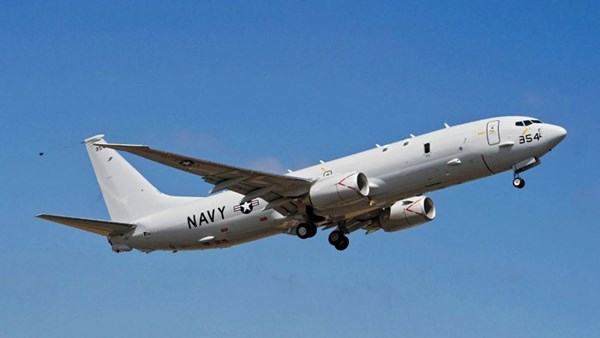An American reconnaissance plane flew over Russian warships near the Syrian shores
An anti-submarine warfare plane from the US Navy P-8A Poseidon made a reconnaissance flight on Friday morning in the eastern Mediterranean Sea, where Russian ships from the permanent task force in the region are supposedly deployed. Another US reconnaissance plane approached the coast of the Crimea.
According to Interfax, which refers to websites that track the movement of military aviation, the Poseidon, tail number 168 761, circled for more than two and a half hours over the eastern Mediterranean Sea between the coasts of Lebanon, Cyprus and Syria, as well as near Israel, after taking off from Sigonella airbase in Sicily.
In the afternoon, another American patrol reconnaissance aircraft headed for the Black Sea. Its route will run over Greece and Bulgaria.
According to the Black Sea Fleet press service, there are currently as many as 10 ships and service vessels belonging to three Russian fleets from the Russian Navy in the Mediterranean Sea. Ships provide cover for the Russian military bases in Syria, including Hmeymim airbase near the city of Latakia and the logistical base of the Russian Navy in Tartus. In the near future, a permanent task force from the Russian Navy in the Mediterranean Sea will be joined by the Admiral Kuznetsov aircraft carrier.
It should be noted that a columnist from the Swiss newspaper Tagesanzeiger Zita Affentranger calls this ship the “worst preserved” among the world’s warships.
The Admiral Kuznetsov sailed to the eastern Mediterranean, where it should connect with the Russian fleet near the Syrian coast. Apparently, planes should soon start taking off from its deck and then make strikes on positions of the so-called Islamic State, whereby the ship will take part in a military operation for the first time. However, “there is doubt about the suitability of the aircraft carrier for the task, because in the past it became famous only because of accidents and endless repairs,” the journalist writes.
Problems began early with the naming of this “miracle of technology.” First it had to be called “Soviet Union,” and then “Riga,” and later it was renamed to the “Leonid Brezhnev,” the aging general secretary of the Communist Party. When the ship came off the building cradle in 1985, it was called “Tbilisi.” Five years later, it was finally renamed in honor of Admiral Kuznetsov, but “still wasn't combat ready.” At the time of the collapse of the Soviet Union, overnight the ship found itself in a foreign country. It was built in Ukraine; its docking port was Sevastopol; and, as soon as possible, the “Admiral” was sent to its next shipyard in the Russian North. As a result, the aircraft carrier was not finished until 1995.
Since then, a whole series of accidents began. After nearly every voyage, the ship had to be repaired. In 2009, it was responsible for the oil spill near the shores of Ireland, and in 2012 the ship simply stood in front of the French coast. After that, it was decided to repair the ship, with repairs to be completed by 2017. “But because of the participation of Russia in the Syrian war, the ship appeared in public earlier, most likely due to pressure from above: President Putin, probably, thinking that it is important to demonstrate the power in the sea,” the author of the article said, stating that the Admiral Kuznetsov is always accompanied by other ships and tugboats just in case.
Meanwhile, Moscow implicitly acknowledges that Russia, with the Admiral Kuznetsov, is no match for the United States. In the past year a model of the future aircraft carrier was presented, with the intention of taking up to 90 bombers on board – more than major US carriers.
How far these plans have come along, considering the economic crisis in Russia, is not clear. However, the Admiral Kuznetsov will be representing Russia in the ocean for a long time, the newspaper writes. “In fact, after the operation in Syria, the aircraft carrier will again go to a shipyard for repairs that will extend the life of the ship for another 25 years,” the article concludes.
